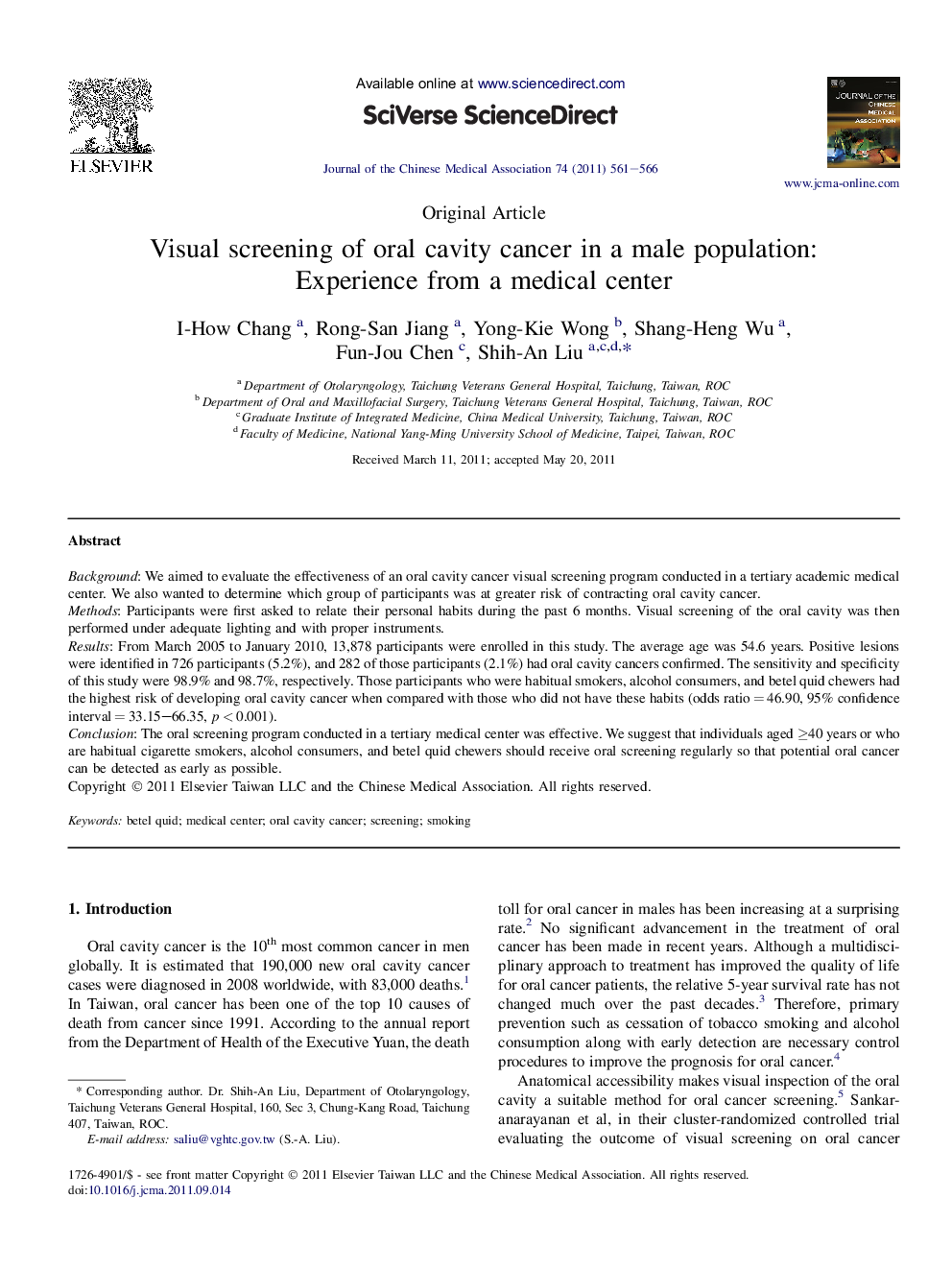| Article ID | Journal | Published Year | Pages | File Type |
|---|---|---|---|---|
| 3476516 | Journal of the Chinese Medical Association | 2011 | 6 Pages |
BackgroundWe aimed to evaluate the effectiveness of an oral cavity cancer visual screening program conducted in a tertiary academic medical center. We also wanted to determine which group of participants was at greater risk of contracting oral cavity cancer.MethodsParticipants were first asked to relate their personal habits during the past 6 months. Visual screening of the oral cavity was then performed under adequate lighting and with proper instruments.ResultsFrom March 2005 to January 2010, 13,878 participants were enrolled in this study. The average age was 54.6 years. Positive lesions were identified in 726 participants (5.2%), and 282 of those participants (2.1%) had oral cavity cancers confirmed. The sensitivity and specificity of this study were 98.9% and 98.7%, respectively. Those participants who were habitual smokers, alcohol consumers, and betel quid chewers had the highest risk of developing oral cavity cancer when compared with those who did not have these habits (odds ratio = 46.90, 95% confidence interval = 33.15–66.35, p < 0.001).ConclusionThe oral screening program conducted in a tertiary medical center was effective. We suggest that individuals aged ≥40 years or who are habitual cigarette smokers, alcohol consumers, and betel quid chewers should receive oral screening regularly so that potential oral cancer can be detected as early as possible.
